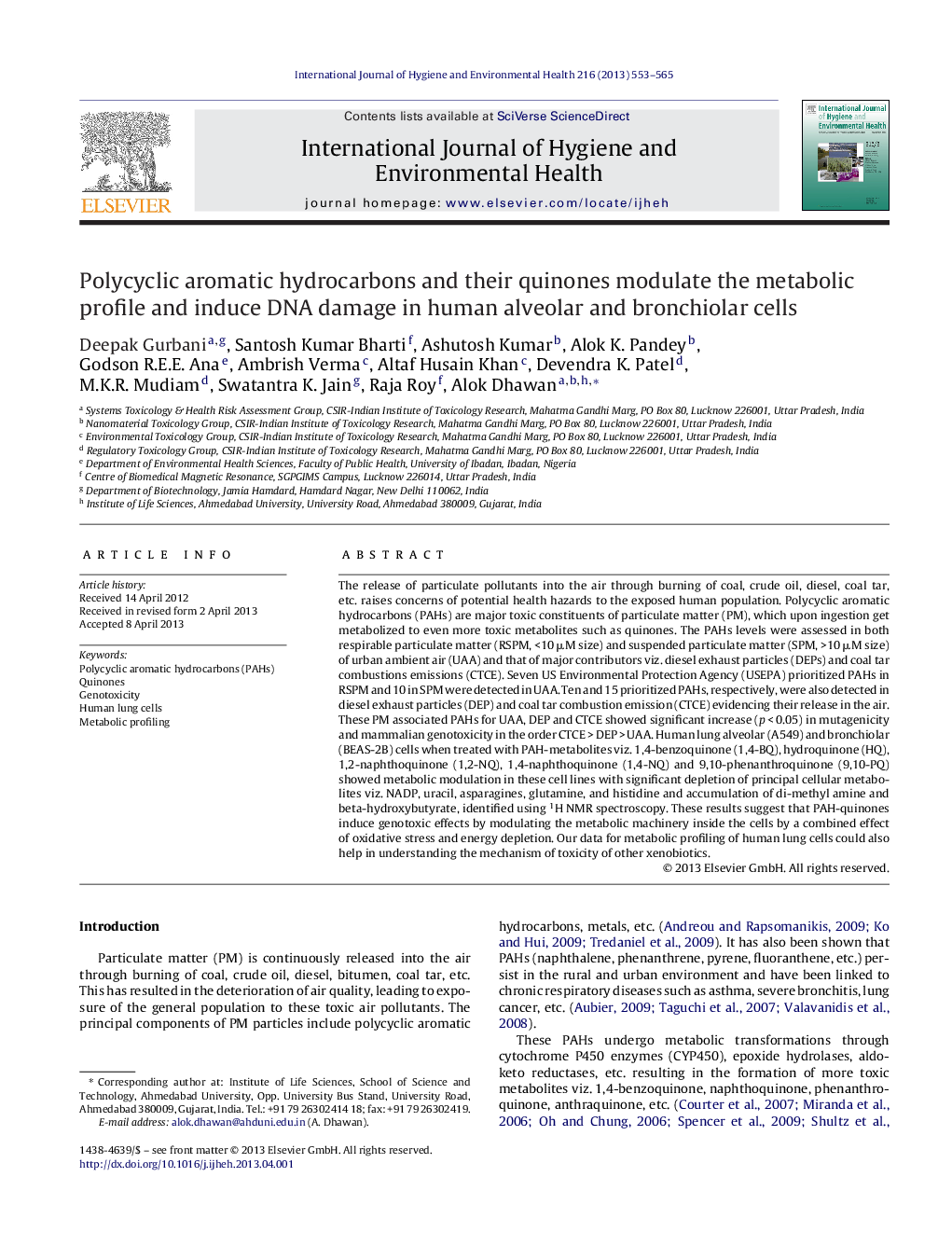| Article ID | Journal | Published Year | Pages | File Type |
|---|---|---|---|---|
| 2588605 | International Journal of Hygiene and Environmental Health | 2013 | 13 Pages |
The release of particulate pollutants into the air through burning of coal, crude oil, diesel, coal tar, etc. raises concerns of potential health hazards to the exposed human population. Polycyclic aromatic hydrocarbons (PAHs) are major toxic constituents of particulate matter (PM), which upon ingestion get metabolized to even more toxic metabolites such as quinones. The PAHs levels were assessed in both respirable particulate matter (RSPM, <10 μM size) and suspended particulate matter (SPM, >10 μM size) of urban ambient air (UAA) and that of major contributors viz. diesel exhaust particles (DEPs) and coal tar combustions emissions (CTCE). Seven US Environmental Protection Agency (USEPA) prioritized PAHs in RSPM and 10 in SPM were detected in UAA. Ten and 15 prioritized PAHs, respectively, were also detected in diesel exhaust particles (DEP) and coal tar combustion emission (CTCE) evidencing their release in the air. These PM associated PAHs for UAA, DEP and CTCE showed significant increase (p < 0.05) in mutagenicity and mammalian genotoxicity in the order CTCE > DEP > UAA. Human lung alveolar (A549) and bronchiolar (BEAS-2B) cells when treated with PAH-metabolites viz. 1,4-benzoquinone (1,4-BQ), hydroquinone (HQ), 1,2-naphthoquinone (1,2-NQ), 1,4-naphthoquinone (1,4-NQ) and 9,10-phenanthroquinone (9,10-PQ) showed metabolic modulation in these cell lines with significant depletion of principal cellular metabolites viz. NADP, uracil, asparagines, glutamine, and histidine and accumulation of di-methyl amine and beta-hydroxybutyrate, identified using 1H NMR spectroscopy. These results suggest that PAH-quinones induce genotoxic effects by modulating the metabolic machinery inside the cells by a combined effect of oxidative stress and energy depletion. Our data for metabolic profiling of human lung cells could also help in understanding the mechanism of toxicity of other xenobiotics.
